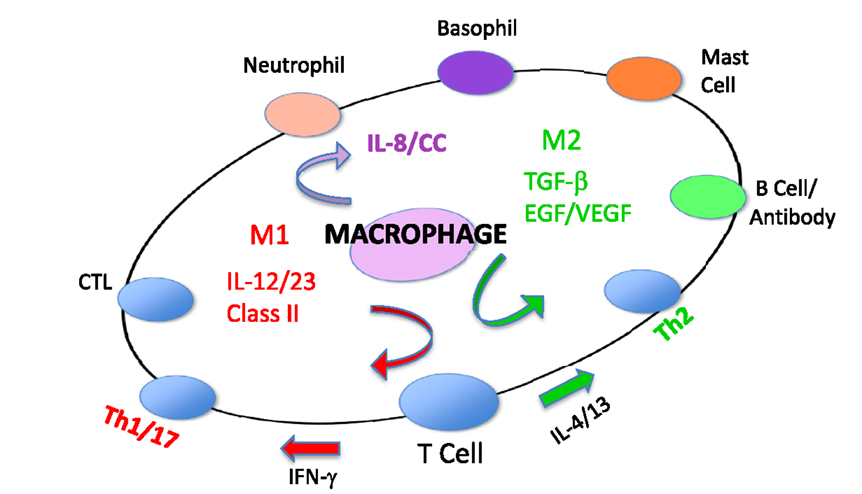
Design of a TAM-targeting supramolecular therapeutic.
Supramolecule provides a double whammy to knock out cancer’s ‘eat-me-not’ signaling, keep macrophages on the attack. Researchers have found that cancer cells evade destruction by macrophages in 2 ways – by converting cells to become docile, M2 macrophages, and by sending out an ‘eat me not’ signal that tricks M1 macrophages into letting them be. Investigators have developed a therapeutic that delivers a double whammy to knock out both mechanisms.
Macrophages play a paradoxical role, with M1 macrophages rousing the immune system to action and M2 macrophages quelling inflammation...
Read More







Recent Comments